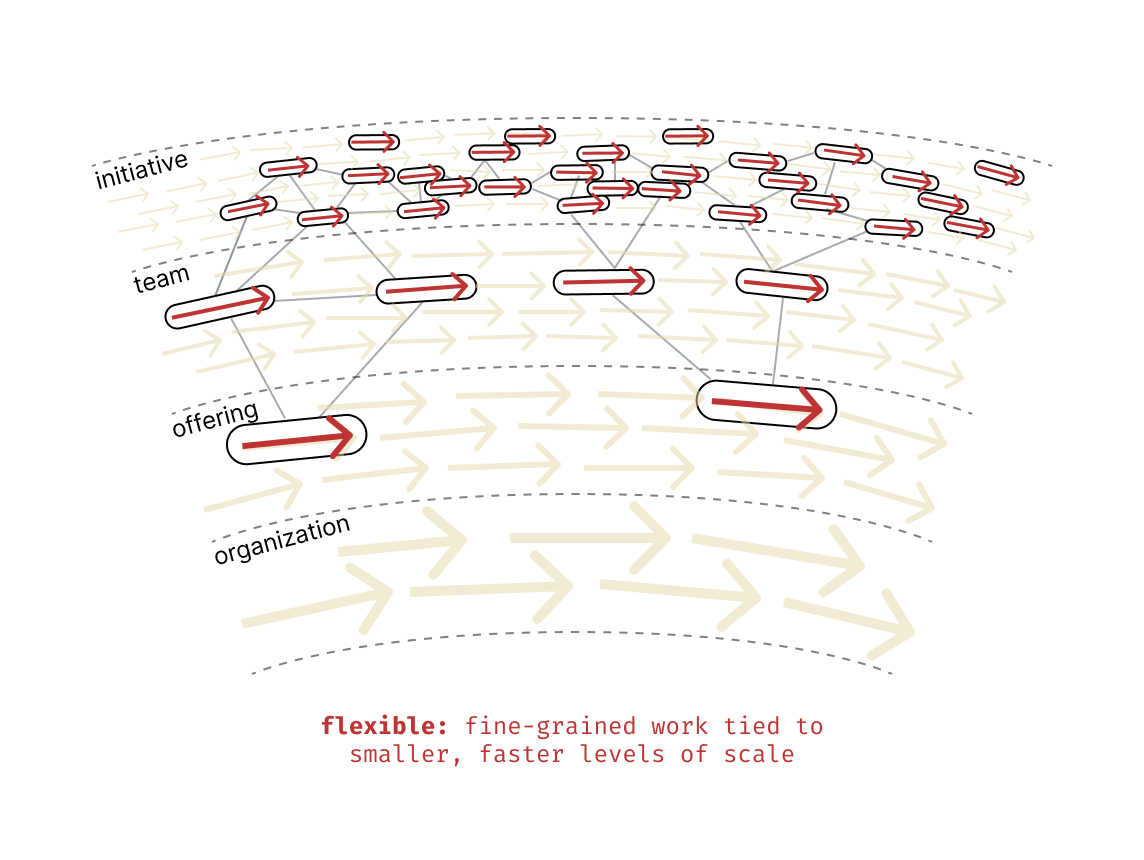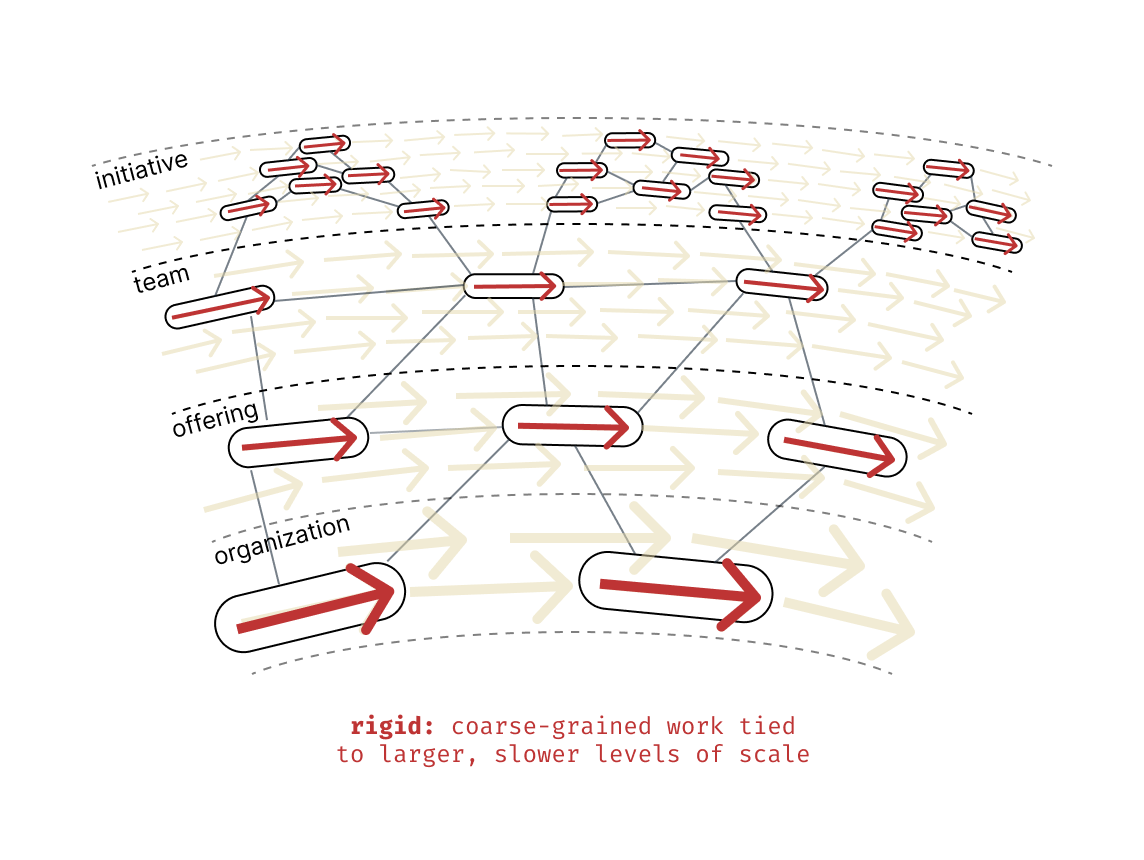Flexibility on Faster Levels
Here’s a bit from Dave Gray’s The Connected Company (2012):
The trick to designing a connected company is to think in pace layers, arranging the layers for maximum flexibility and adaptability. Where change and variability are high, you want to be flexible and adaptive to change. Where change and variability are low, you want to find ways to create stable, reliable platforms to support the layers higher up in the pace-layer hierarchy.
To be more adaptive, we distribute more control and activity upwards, to the higher — smaller and faster — levels of scale. To be more efficient, we maintain control and standardization at the lower — larger and slower — levels of scale.
Note that this quote describes two different kinds of context: uncertainty with a desire for flexibility, and certainty with a desire stability. Recognizing context is a crucial skill. It’s a basic element of Wardley mapping: identifying the evolutionary state of our work, and determining an approach to action. It’a also core to decisionmaking in the Cynefin framework: recognizing the domain of our work (ordered, complex, chaotic), and determining an approach to action.
In complexity and uncertainty, we want more flexibility. We want more fine-grained actions moving along in parallel, sensing possibility and providing signal for us to operate from. That may look like this.

If we feel the situation is unmanageable — if it appears chaotic (even if it is merely complex, not aligning to our well-ordered plans) — we may respond with rigid control and overspecification. In our work, this control may be product-level reviews, board intervention, release calendars, foundational overhauls, and more rigorous roadmap development. That may look like this.

Deployed at the wrong time, these activities reduce our adaptability. Control from lower levels serves to bind and stifle the actions that drive learning. Note a discontinuity in the fine-grained work above. The creation, preparation, participation in, and follow-up to the slow-level activities removes energy from the higher level activities that create flexibility, optionality, and learning.
Consider the amount of energy that planning, all hands meetings, product reviews, and business reviews consume, at each instance of their recurring cycles. How does it trade off with our need to move, to learn, to communicate, and to continually course-correct based on new signals and situations?
The practical upshot here is that if a team is deemed to have a velocity problem, the knee-jerk reaction is to provide the very kind of control that further exacerbates the problem. Better we give the team the tools to examine their own situation and improve it.
On Layering vs. Levels
The Connected Company quote above is using the language of Stewart Brand’s pace layering. It’s a remarkable concept, leaving publishers continuously impressed, and researchers-turned-Chief-of-Staffs pulling it off the shelf to illustrate organizations.
We reached for pace layering as a visual metaphor when I changed strategic levels of scale in LC22, but retain the language of levels of scale to describe the levels we’re working with.
Levels of scale come from Alexander’s Nature of Order, as the first of fifteen fundamental properties of wholeness. It carries an entirely different orientation than pace layers: it speaks to scale relationships between centers of structure. We can also discuss the structure of centers that are made from recurring patterns of action. It implies a composability and parts-whole relationship between activities up and down the levels of scale. Larger-scale activities are structures in their own right, composed entirely of smaller activities that follow the same pattern, yet expressing an emergence not entirely existing in the constituent parts.
It provides a path back to concrete activities and opens the door further: we can profile the amount of activity, energy, and time spent in the activities that constitute each center at each scale. We'll draw on these themes as we turn some of this theory into more practical tools and methods.
Other things of note
- Cynthia Kurtz’ four-part textbook series Working with Stories is available as pre-prints for pre-reading. Previously, I was familiar with her work from the 2003 paper with Dave Snowden, “The new dynamics of strategy: Sense-making in a complex and complicated world.” Has anyone been following her work? I'd like to explore further.
- Belated but important: I won DRC’s May, 2025 Employee Of the Month award. I got a cool mug.


![Flexibility and Layers vs. Levels [LC27]](/content/images/size/w100/2025/06/ssv3_rigid-vs-flex.png)
